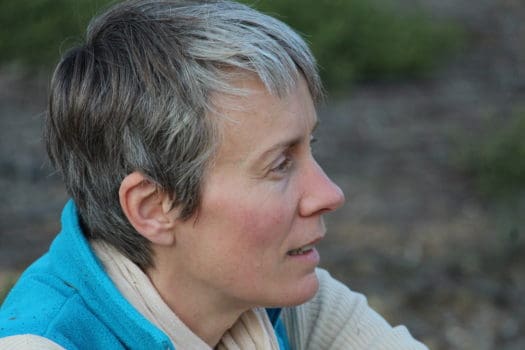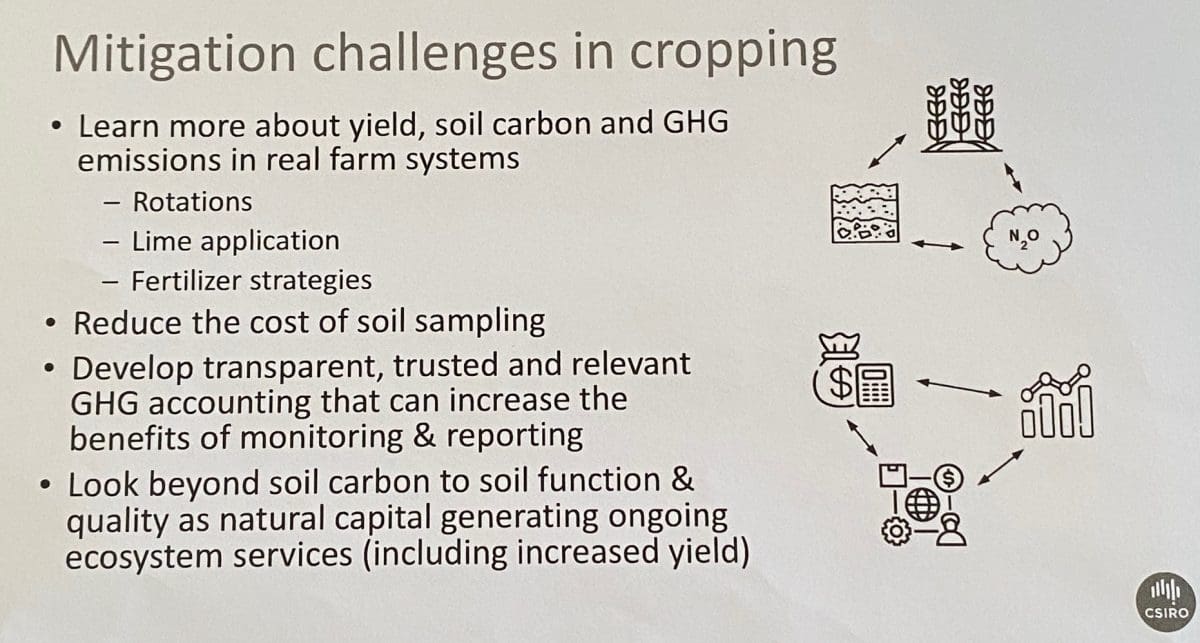THERE are big opportunities for the cropping sector to reduce greenhouse gas (GHG) emissions and become actively involved in soil carbon sequestration, but that can only be achieved if a tailored system of recording, accounting and auditing is developed to validate the benefits.
That’s the message Sustainability Assessment and Metrics team leader within CSIRO’s Climate Science Agriculture, Maartje Sevenster, put to a conference in Canberra yesterday that looked into mitigation strategies for reducing agricultural GHG emissions.

Maartje Sevenster
Co-hosted by the Crawford Fund and the Australian Centre for International Agricultural Research, the conference addressed the topic “What can farmers do? Farmer-led, science-based GHG mitigation”.
Dr Sevenster said accurate accounting methods were crucial to determining the impact of GHG mitigation, which meant a more appropriate system needed to be developed to help Australian farmers report what they did.
“At the moment there is a lot of confusion around that. There are tools out there that are used globally but are not relevant in the Australian context,” she said.
Dr Sevenster said CSIRO was starting a project to develop a common framework that could be adopted across all Australian agricultural sectors.
“That is so we know what we are talking about when we use particular terms, we know what we mean when we talk about a greenhouse gas baseline. That is a very important step in the process,” she said.
“We need to know more about how things work in real systems.
“We know a lot from modelling. We know a lot about how we think things will work out. But the science still needs to be applied in a range of real life, real time systems.”
Mitigation opportunities
Dr Sevenster said there were many opportunities for farmers to mitigate greenhouse emissions and enhance soil carbon sequestration, even in certain cropping systems.
“I know the discussion is usually around livestock systems, but there are opportunities in cropping systems. But it is an area we need to know more about what really happens on the ground because ultimately it will be scrutinised and require some form of auditing. We really need to move towards more sampling, more real data,” she said.
“The big thing there is it is still quite expensive. Soil sampling is costly. It is a big ask, but we need to start doing that.
“The good news is that CSIRO has several big systems files running where we will apply standard greenhouse gas accounting methods so we know more about how it will work out from a reporting perspective.
“There are a lot of options for farmers to mitigate greenhouse emissions that we know are likely to work in a range of circumstances. But we still face challenges.”

Cropping industry low emitter
In terms of national emissions, Dr Sevenster said the cropping sector was a relatively low emitter, contributing only 2 to 3 per cent.
“But when you look at supply chain emissions a lot of the drivers of greenhouse gas mitigation go beyond the national perspective. It includes the multinationals and the finance sector. If we take that perspective then Australia is actually doing quite well compared to other countries,” she said.
“The net greenhouse emissions of, say, wheat, is at the lower end of the international spectrum. We compare quite favourably with a lot of the other exporting countries.
“It is mostly because that, even though there is a lot of variability in field emissions of primarily nitrous oxide from fertiliser and residue management, they are much lower in Australia than elsewhere. It has something to do with soil structure and the lower rainfall most crops are growing in.”
Carbon-neutral target for livestock
Southern New South Wales livestock producer, Lucinda Corrigan, Rennylea Angus, Albury, outlined to the conference the part her family’s business was playing in helping meet the red meat industry’s carbon-neutral target.

Lucinda Corrigan
The Corrigans runs a 1600-cow seedstock operation on a number of properties in the Albury-Culcairn area where they have taken a genetic and productivity approach to lowering emissions intensity.
“I thought we’d find long term solutions through adaptation with the tools we had in the toolbox, particularly focusing on perenniality and our pastures and soils, the feed base and our genetic approach with the cattle to create a sustainable cow herd,” she said.
“The productivity approach relies on weight-for-age. So, how do we have what I call ‘precision agriculture’ for beef? How do we get the precision growth path to reach target market weights with a highly desirable and nutritious end product, and a highly fertile cow herd which lowers our emissions intensity? We are seeing that with some of the systems we have adopted in our farming system.”
New tools, technologies
Ms Corrigan said long term investment in adaptation to climate change had reached a ceiling for early adopters in some industries and producers were looking for new tools to continue those improvements.
“In a lot of industries we have seen an adaptation ceiling. It hasn’t been as well qualified in the animal industries as it has in grains. We are now seeing grain growers who are reaching 80 per cent of yield potential through all the significant improvements in innovation technologies such as seed placement, moisture use, variable rate and precision technologies,” she said.
“80pc is extraordinary. Across the grain industry now it is about 55pc of yield potential. That is a massive increase on, say, 1990.”
Ms Corrigan said there had been significant advances in the livestock industry, but it was an ongoing journey.
“We are now seeing the best producers doing 10 kilograms of carbon dioxide emissions per kilogram of beef. We have seen that quite consistently amongst the top end producers. But, the question is how you go from there to the ultimate goal which is nought?” she said.
“Will it be offsets such as tree planting and perennial pastures which increase soil organic matter and carbon?
“Then there are the new technologies in the pipeline. There is a red algae that has been shown in animal health studies to reduce methane emissions by up to 80 per cent. There is a suite of legumes in the pasture system to reduce nitrogenous fertilisers. Then there are the ‘out there’ technologies such as vaccination against methanogenic-producing bacteria in the rumen.”
Grain Central: Get our free cropping news straight to your inbox – Click here



HAVE YOUR SAY